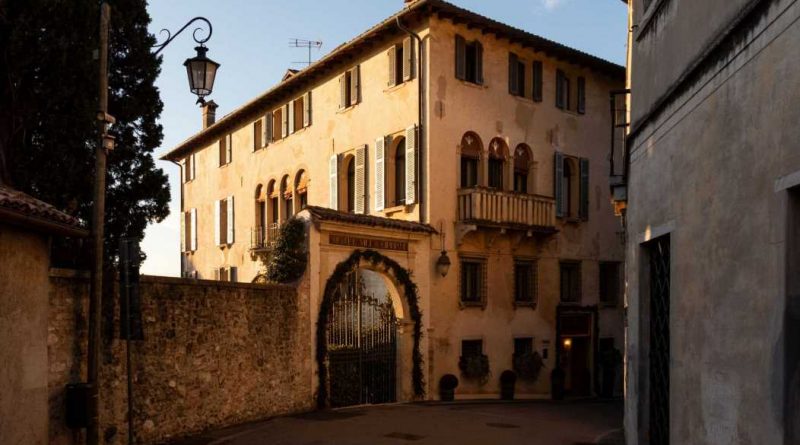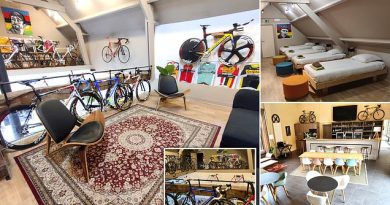The Renaissance of Small-Town Living in Italy
Our Here, Now column looks at trends taking hold in cities around the world. Given how different the world looks these days, we’re focusing on the feel-good moments emerging in between.
When Luca Lelli and his partner came out of Italy’s two-month-long lockdown last May, they made themselves a promise: as soon as circumstances would allow it, they’d pack up their things and leave urban life behind. The couple had been in a small apartment in Imola, a city in the northern region of Emilia Romagna, longing for more space and nature.
“We’re both outdoor types, and had been thinking about a change of scenery for a while,” Lelli, 33, says. “But the health crisis really pushed us to act on it, especially once I started working from home.”
In September, they applied to a new regional government fund called Bando Montagna, aimed at helping young couples buy a house in one of Emilia Romagna’s 119 ancient mountain towns. Within a few weeks, they’d close on a property just outside Castel del Rio, a small village (population: 1,208) some 16 miles away from Imola, mostly known for its production of chestnuts. They’re currently renovating the three-bedroom home, and hope to move in full-time by June. “We can’t wait,” Lelli says. “It’s going to be an opportunity to start afresh, slow down.”
Across Italy, many seem to share that same sentiment.
Over the past year, an increasing number of urbanites have been turning to borghi—the centuries-old villages and small towns in Italy that make up 54 percent of its administered territory, in search of a better quality of life and bigger spaces to live in. Lelli was one of 2,310 people who applied for Emilia Romagna’s initiative. In all of Italy’s 20 regions, more are in the process of relocating.
The shift is no doubt spurred by remote working, the need to socially distance, and the desire for peace and quiet during a wildly stressful time—but it’s also a result of ongoing efforts by regional governments to revive the nation’s borghi, many of which have been half-empty for decades. Financial incentives sweeten the offer: Of 2,000-plus who applied, 340 were approved and received monetary support to invest in a home in Emilia Romagna.
Alice Di Sacco, a 37-year-old scientific researcher who recently relocated to the Tuscan center of Calci (population: 6,374), says she can no longer imagine returning to Pisa, where she grew up. Now, she lives in a sunny hillside house overlooking a valley of olive groves with her two-month-old son. “Technically, we don’t even live in Calci but Castel Maggiore, a frazione [territorial subdivision] of Calci,” she says. “It’s us and around 500 other people. I love it.”
While city dwellers are becoming more and more attracted to borghi living during the pandemic, those who have long inhabited these small villages are hardly surprised.
“Dealing with restrictions and possible new lockdowns in a 13th-century town where nature is the main backdrop and everyone knows one another is a little more enticing than having to socially distance in cities, where flats are small, rents high, and parks overrun with fellow residents hankering for that same bit of green,” says Agnese Carletti, mayor of San Casciano dei Bagni (population: 1,579) a charming borgo in the Chiana Valley between the Tuscan cities of Arezzo and Siena.
Those aforementioned incentives help, too.
It’s not just the internet-famous “one-euro houses” scheme (the deal: a fixer-upper for the sum of one euro, or little over a dollar), which has been around for over five years in almost 30 small towns in Italy. (Though, naturally, that effort has grown to include even more borghi during the pandemic, from Montresta, with a population of just 483, to the 10,000-strong Salemi in Sicily.) But a plethora of new community projects, business opportunities, and infrastructure built to cater remote workers have also convinced many to make the move.
Take Santa Fiora (population: 2,611), a tiny medieval town nestled at the foot of Mount Amiata in Tuscany, which in October launched the Santa Fiora Smart Village project, positioning itself as the first Italian borgo to welcome and promote remote working, with high-speed fiber optic cable and rent support. Monterubaglio (population: 652) in Umbria has teamed up with remote work startup Smartway to offer fast Internet connection and discounted long-term accommodations for those who no longer need a traditional office.
Others like San Casciano dei Bagni are getting even more creative. There, the local administration allocated 30,000 euros to support small businesses during the pandemic, in addition to offering financial aid for new families. Bringing the kids along? They’ll have free horse-riding lessons in their school curriculum, too. The borgo also started collaborating with a local female-run cooperative on a recycling program that transforms discarded wool from local sheep into artisanal products. “We’re doing as much as we can to diversify our [offerings],” Carletti says, “and make San Casciano a truly 21st-century borgo.”
Meanwhile, locals are also getting involved in injecting fresh energy into their new homes. In the Etruscan town of Vetralla (population: 14,031), a newly established cooperative called Meraviglia has launched a campaign to restore a 1930s cinema and turn it into a cultural center. Back in Tuscany, residents of the Valdarno Valley, between Arezzo and Florence, have developed the Valdarno Bike Road project—150 miles of bikeable paths connecting villages around the area, and an app that highlights the cultural treasures along the way.
“Ours isn’t a dying borgo, but one with a soul and lots of ideas,” says Diana Ghaleb, a teacher from Vetralla and a co-founder of the Meraviglia co-op.
Mayor Carletti of San Casciano agrees. “There’s been talk in the past of the need to ‘adopt’ the borghi. I don’t like that proposition. Our villages don’t need to be adopted: They need to be lived. It’s the only real way to ensure they return to thrive.”
And even return to exist, as in the case of Brento Sanico, a medieval borgo (population: 0) on the Apennine mountains between Tuscany and Emilia Romagna that’s been left abandoned since 1961. There, a group of volunteers led by seasoned hiker and writer Anna Boschi—who first came across it on a trek in 1998—has been restoring its church and six stone houses since 2016, with the ambition make it an inhabited center once again. It’s working: While no one lives in Brento yet, during the past year alone, over 500 people emailed Boschi to enquire about moving there. Two couples who have been helping with the restoration are planning to make it their permanent home by summer.
“People are yearning for change, in all aspects of their lives,” Boschi says. And a move from city living to any of Italy’s borgi promises exactly that.
We’re reporting on how COVID-19 impacts travel on a daily basis. Find our latest coronavirus coverage here, or visit our complete guide to COVID-19 and travel.
Source: Read Full Article




